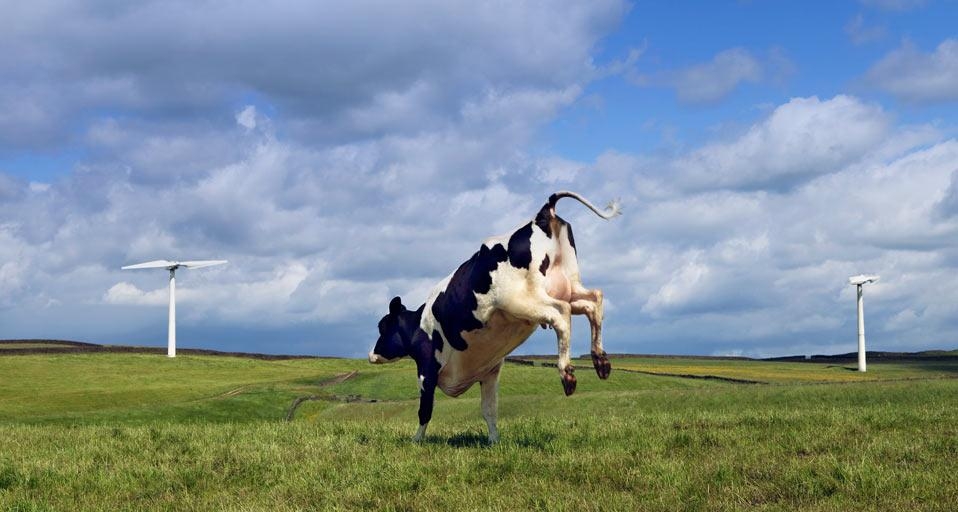On March 31st researchers from the Chalmers University of Technology in Sweden concluded that to meet the United Nations’ goal of limiting global warming to 2 degrees Celsius a reduction in meat consumption is needed. Further the report contends that if meat consumption trends continue as projected, nitrous oxide and methane emissions from livestock may double by 2070. The scientists conclude, “This alone would make meeting the climate target essentially impossible.”
The industrial livestock sector has come under much criticism as it has been pinned for 18 percent of all green house gas emissions. Some experts feel that the contribution could be as high as 51 percent, as scientific studies continue to demonstrate how factory farms exacerbate greenhouse gas emission levels. Producers, policymakers, and consumers have the ability to dramatically change the impact of meat production on the environment.
Public policy directly contributes to, maintains, and promotes the industrial livestock sector, and all its externalities. The case of Texas County, Oklahoma exemplifies how policy shapes the food system in the United States, and disregards the environmental cost of agriculture. In 1995 the government provided $60 million in direct subsidies and tax breaks to Seaboard Farms to establish a colossal pork slaughterhouse in Texas County, Oklahoma. Whereas Texas County agriculture had previously revolved around wheat and hay production, the county now raises more than a million hogs annually. Further, Seaboard Farms produces as much sewage as the entire city of Philadelphia. Such waste sits in “open air lagoons,” which emit large amounts of nitrous oxide and methane.
Policy that subsidizes the industrial livestock sector, paired with loose regulation on the part of the EPA and other government agencies benefit profit making and easy access to industrial meat. However, current livestock practices are a danger to the wellbeing of the environment, as the results of emissions have become more visible. According to a range of experts across academic disciplines, policy can be a crucial tool for reform in changing the industrial livestock sector’s relationship to the environment. Lawmakers might consider transitioning away from financial support for large agribusiness and expand subsidies for local, organic farmers in the farm bill to build capacity for environmentally friendly production, which would make local, organic food more available and affordable for consumers. Additionally, the government has the opportunity to encourage sustainable meat and produce consumption through healthy lunch and education programs aimed at public institutions like schools, prisons, hospitals, etc…
Scientific research is crucial as well, as new methods for raising livestock can improve production’s consequences on the environment and public health. For instance, recent studies from Stonyfield Farm indicate that altering a cow’s diet can significantly decrease methane emissions. Expelled through the wind and tailpipes of cattle, methane is a byproduct of enteric fermentation, a digestive process in which complex carbohydrates, such as fibrous gases, are broken down by microbes in the guts of hoofed animals. Responsible for a large chunk of anthropogenic methane emissions, addressing enteric fermentation has become crucial for reducing the meat industry’s contributions to climate change. In 1999 Nancy Hirshberg, Stonyfield’s vice president for natural resources, commissioned one of the first reports that would propel this area of research forward. Since then, scientists have found that animal feed comprised of omega-3-rich plants like alfalfa, flax, and hemp rather than the usual mix of corn and soy can help cut up to 18 percent of emissions discharged by cattle digestive processes. It can even increase milk production by 10 percent, as Vermont farmers reported notable changes in the health of their livestock. Scientific research is a valuable tool in addressing and alleviating the green house gas emissions from factory farming.
Consumers also have the potential to make change. In his book The CAFO Reader, Daniel Imhoff discusses the ways in which individuals can reduce processed meat consumption, and in their turn environmental footprints. While he emphasizes the need for more vegetable-based diets, he also encourages readers to eat smaller amounts of animal products, purchase meat and dairy products from local farmers, read labels, and be more informed and educated shoppers.
The industrial livestock sector is heating our planet at an alarming pace. Moving forward, policy, research, industry reform, and consumer behavior are critical in addressing the greenhouse gas emissions discharged by factory farms. Though changes require massive commitments in the short term, they will protect the environment and humanity’s stability in the long term.
